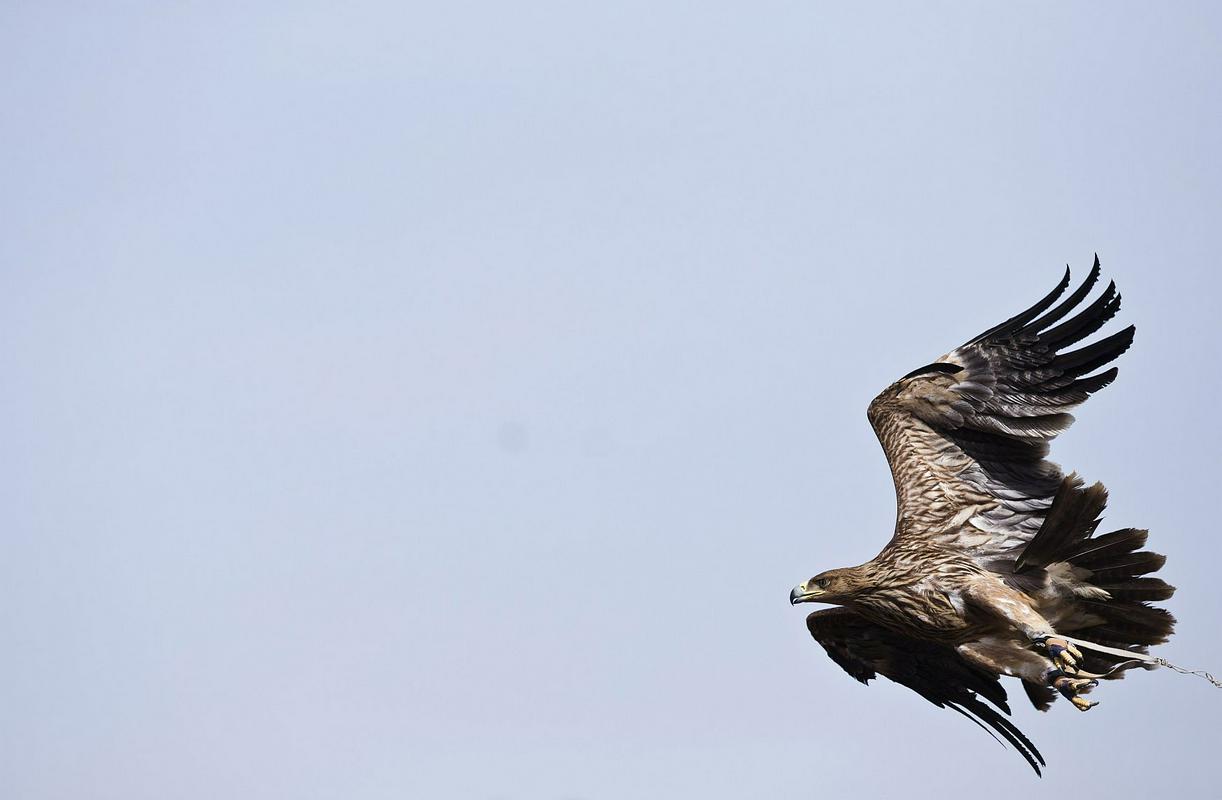
On clear days, visitors to Slovenia’s mountains can observe a magnificent bird soaring high in the afternoon updrafts above remote mountain valleys. The golden eagle, Slovenia’s largest bird, was once widespread throughout the Alps, but it took a concerted conservation effort to ensure the species’ survival in the 21st century.
Golden eagles are one of the symbols of the Slovenian Alps, but they can also be found throughout the country’s sub-Alpine foothills. Usually building their nests on cliff sides and other high, rocky perches, they are exceptionally loyal animals; males and females tend to live together, laying their eggs in the spring. They are also powerful, and some golden eagles have even been known to kill wolves.
Despite their dominance in the natural world, golden eagles were almost brought to the brink of extinction. At a time before hunting was restricted, the eagles were considered a prize game bird, and their numbers began to decline precipitously throughout Europe. In the 20th century, habitat loss due to the expansion of settlements and industry further reduced their numbers, as did the use of DDT-based insecticides in the postwar era.
When it became increasingly clear that the future of the golden eagle in Slovenia was under threat, authorities declared it an endangered species. The killing of golden eagles became punishable by high fines or even possible prison sentences. Crucially, disturbing the eagles’ habitat was also made illegal.
The road to recovery is a slow one, and the golden eagle remains on the Slovenian Red List of Endangered Species. Still, the new legislation combined with a new awareness of the species’ vulnerability has led to a rebound in the number of golden eagles throughout Slovenia. Between 20 and 30 pairs of the eagles are now estimated to live in Slovenia, with a habitat ranging from the Adriatic hinterland to the rocky peaks of the Alps.
Recently, however, a new threat to the golden eagle population has emerged in the form of electricity-producing wind turbines. The species is known to be particularly vulnerable to the destructive force of the turbines’ blades, and when a new turbine was built at Volovja Reber in Slovenia’s Karst region, environmentalists raised their concerns, pointing out that a pair of golden eagles was known to nest just a few hundred meters away.
So far, no golden eagle deaths in Slovenia have been attributed to wind turbines, but since the lifespan of a golden eagle can be as long as 30 years, wind turbines could cause lasting damage to the recovering golden eagle population in the country. New wind turbines, already being planned in Slovenia, promise to reignite a contentious debate that pits a clean source of power against the concern for one of the symbols of the Slovenian mountains.


































































